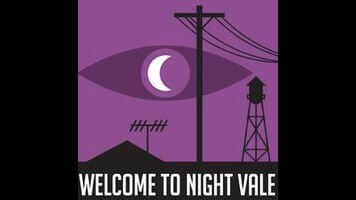While there are a few chapter break sections that stick to the same format of the show—with Cecil offering bits of bizarre local news, traffic reports, and commercials—most of the novel follows two other residents of Night Vale whose relatively normal lives in the extremely abnormal town are disrupted by its latest bout of deep strangeness. Diane Crayton is a single mother trying to balance work and raising a teenage boy (who happens to be a shapeshifter capable of being anything from a housefly to a house fire). Diane decides to investigate the disappearance of a co-worker everyone else seems to forget about. Jackie Fierro is a 19-year-old who’s relatively content to run the town’s pawn shop, even though she’s alienated from her peers who entered their 20s decades ago. Her routine is disrupted when a man hands her a paper that says “King City” that constantly jumps back to her hand, no matter how many times she throws it away or destroys it.
Diane and Jackie’s alternating chapters inevitably collide as their search for answers leads them to many Night Vale residents and locations that will be familiar to podcast listeners, including Old Woman Josie’s house where they get advice and gas money from angels, the library where they risk the wrath of monstrous librarians to get a glimpse of the newspaper archives, and the offices of the Night Vale Daily Journal to chat with an editor who keeps print journalism alive by attacking bloggers with hatchets.
Fink and Cranor’s world-building skills are on full display with the longer format, giving them the chance to dive in to the ideas of what it’s like to be a parent or a teenager in a town where time doesn’t always function and going to the library for a school research project is a life-threatening endeavor. But the book feels overstuffed with references, as if the authors felt the need to hit so many touchstones from their podcast, which reduces the plot’s progression to a crawl.
They would have done better to just focus on their protagonists and Diane’s son, Josh, an especially charming character trying hard to manage adolescence and the questions of identity it brings. Some of the book’s best moments involve his complicated love life—there’s a girl who likes him but only when he’s a biped and a boy who likes him but only when he’s a cute animal—and relationship with his mother as he’s torn between love and respect and the frustration of a teenager questioning his boundaries. The book gets much stronger when Jackie and Diane actually start working together and a sort of grudging camaraderie develops between the two highly capable women.
Cecil’s interjections, often cut off at the beginning to mimic the effect of tuning in to a radio show in progress, are a mixed bag. They add to the book’s disjointed feeling. It’s already so filled with random asides—like a diner server who offers patrons fruit grown from her own limbs or the machinations of the Faceless Old Woman who secretly lives in your home—that it’s hard to keep track of what the problem with King City is, even without periodic reports from Cecil about how his boyfriend, Carlos, is trying to deal with a crisis caused by lawn flamingos. But Fink and Cranor have the most experience writing Cecil’s absurdist script and his sections are some of the funniest in the book, like when he offers a woman in crisis a job as a radio station intern involving the responsibility of editing his fan-fiction. Both Jackie and Diane listen to Cecil’s show, a source of comfort in their crazy world, and of course his broadcast pushes their plot along multiple times—sometimes in hilarious ways, as in when a chapter sharing his warnings to absolutely not touch the flamingos is immediately followed by the suggestion that the women find some flamingos to touch.
The plot picks up late in the book, becoming a wonderfully creepy tale filled with revelations about the nature of the town and its residents. Those tantalizing final few chapters provide a glimpse of what Fink and Cranor might be capable of when freed of the constraints of making references and allowed to just tell a story in their fascinating setting.







![HBO teases new Euphoria, Larry David, and much more in 2026 sizzle reel [Updated]](https://img.pastemagazine.com/wp-content/avuploads/2025/12/12100344/MixCollage-12-Dec-2025-09-56-AM-9137.jpg)

































